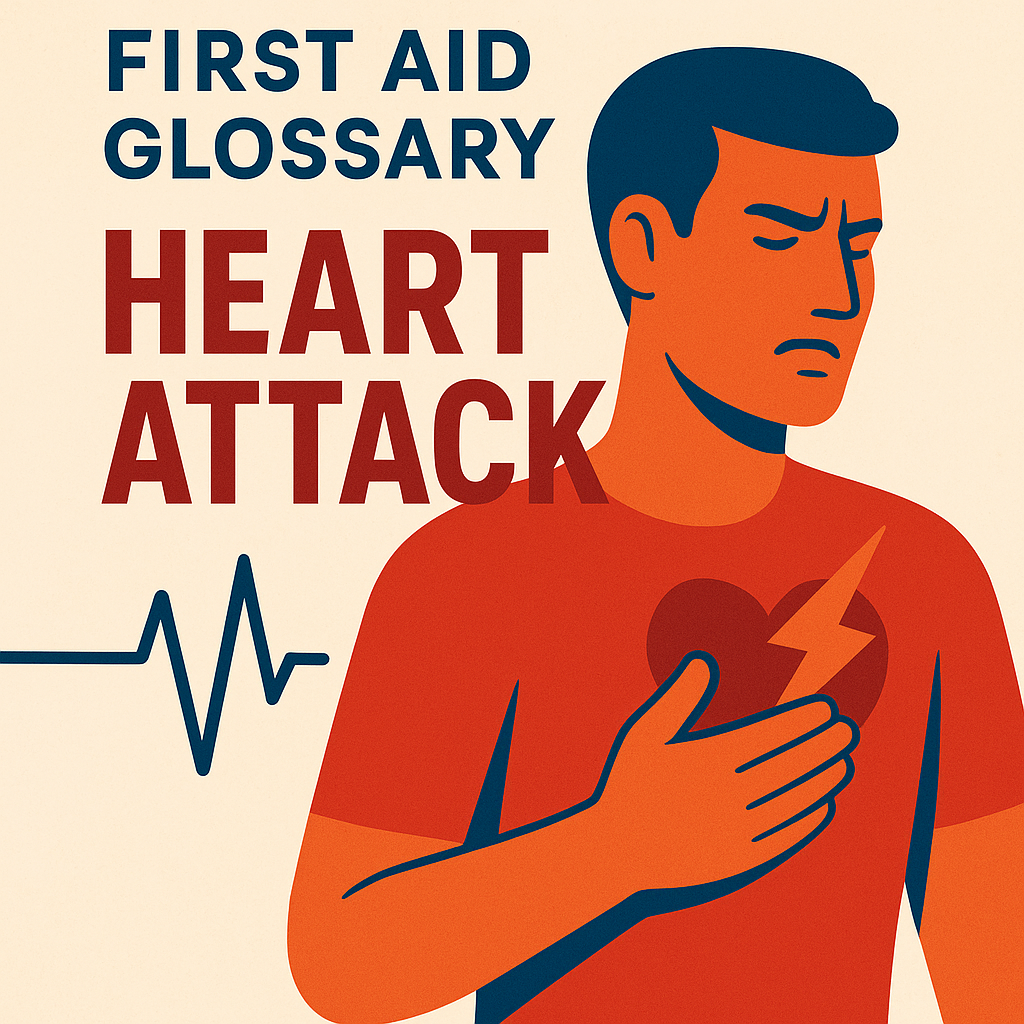- What is a Heart Attack?
- Why It Matters
- Common Causes of Heart Attacks
- Common Signs and Symptoms
- How Do I Know if It’s Needed?
- What to Do in Case of a Heart Attack
- Trainer Tips
- Safety Advice
- Key Takeaways
- Motivational Note
- Internal Links for Further Learning
Glossary: Heart Attack Definition
A heart attack, or myocardial infarction, occurs when blood flow to a part of the heart is blocked, preventing the heart muscle from receiving enough oxygen. This condition can lead to serious damage to heart tissue and can be life-threatening.
—
What is a Heart Attack?
Understanding heart attacks is crucial, as they are among the leading causes of death worldwide. Think of your heart as a powerful engine pumping vital fuel (blood) throughout your body. If something obstructs that flow (like a blockage), the engine can’t function properly, leading to serious consequences.
Why It Matters
Knowing how to recognize and respond to a heart attack can make a life-saving difference. With prompt intervention, you can greatly increase the chances of survival for someone experiencing a heart attack. Being prepared can help turn a potential tragedy into a story of resilience.
—
Common Causes of Heart Attacks
Coronary Artery Disease (CAD): The primary cause of heart attacks; this occurs when the arteries supplying blood to the heart become narrowed due to plaque buildup, like a blocked plumbing pipe.
Blood Clots: These can form due to damaged arteries or other factors, leading to sudden blockages.
Spasms in Coronary Arteries: Occasionally, arteries may spasm, temporarily reducing or stopping blood flow—imagine a garden hose pinched in the middle.
Risk Factors: Lifestyle choices such as smoking, an unhealthy diet, lack of exercise, heavy alcohol use, and conditions like high blood pressure or diabetes significantly increase heart attack risk.
—
Common Signs and Symptoms
Recognizing the signs of a heart attack can be the difference between life and death. Here’s what to keep an eye out for:
1. Chest Discomfort: This may feel like pressure, squeezing, fullness, or pain. It often feels like an elephant sitting on your chest.
2. Pain in Other Areas: Discomfort may radiate to the arms, back, neck, jaw, or stomach—like a ripple effect spreading across your body.
3. Shortness of Breath: This may occur with or without chest discomfort.
4. Other Signs: Cold sweats, nausea, or lightheadedness. Trust your gut feeling—if something seems off, it’s better to act.
How Do I Know if It’s Needed?
If you or someone else exhibits these symptoms, treat it as a medical emergency. Quick action can make a world of difference. Remember, you can’t make it worse—doing something is always better than doing nothing!
—
What to Do in Case of a Heart Attack
If you suspect someone is having a heart attack, follow these steps:
1. Call Emergency Services: Dial 000 immediately. Time is of the essence.
2. Have the Person Sit Down and Stay Calm: Encourage them to rest and keep them as calm as possible—think of a lighthouse guiding a ship safely during a storm.
3. Help Them Chew Aspirin (if not allergic): This can help thin the blood, making it easier for it to flow—similar to adding water to thick paint to make it easier to use.
4. Monitor Symptoms: Be aware of their condition; if symptoms worsen, be prepared to perform CPR.
5. Perform CPR if Necessary: If the person becomes unresponsive and isn’t breathing, start CPR:
– Place your hands in the center of the chest.
– Push hard and fast (about 100-120 compressions per minute). Think of it like using a hand-pump water dispenser—each compression pushes blood through the body.
– Continue until help arrives or the person starts breathing again.
Trainer Tips
– Practice CPR Techniques: Knowing what to do ahead of time can alleviate fears when it counts.
– Stay Informed: Understanding heart health and how to recognize emergencies builds confidence.
Safety Advice
– Avoid Giving Untrained People Aspirin: Ensure they have no allergies or prior adverse reactions.
– Be Aware of Your Environment: If performing CPR in public, have someone call for help.
—
Key Takeaways
– A heart attack is a serious medical emergency caused primarily by blocked blood flow to the heart.
– Recognizing symptoms quickly can save lives.
– Staying calm and following these steps can make a significant difference.
– Confidence comes from preparation—know what to do and practice when possible!
Motivational Note
Remember, you are not just a bystander; you have the power to help someone in need. By learning about heart attacks and how to respond, you’re equipping yourself with the life-saving skills many people lack. Always encourage others to be prepared, just like you are. Each of us can be a beacon of hope in critical moments—let’s shine brightly together!
—
Internal Links for Further Learning
– CPR Basics
– Understanding Heart Health
– Recognizing Stroke Symptoms
By continuing to educate yourself and others on these crucial topics, you can foster a community of individuals ready to act with confidence in emergencies. Together, let’s create a safer world!
![Generate a high-quality, realistic 4K image illustrating [TOPIC]. Each image should have a slightly](https://firstaidglossary.com.au/wp-content/uploads/2025/10/generate-a-high-quality-realistic-4k-image-illust-1760695440.png)
![Generate a high-quality, realistic 4K image illustrating [TOPIC]. Each image should have a slightly](https://firstaidglossary.com.au/wp-content/uploads/2025/10/generate-a-high-quality-realistic-4k-image-illust-1760695491.png)

Leave a Reply